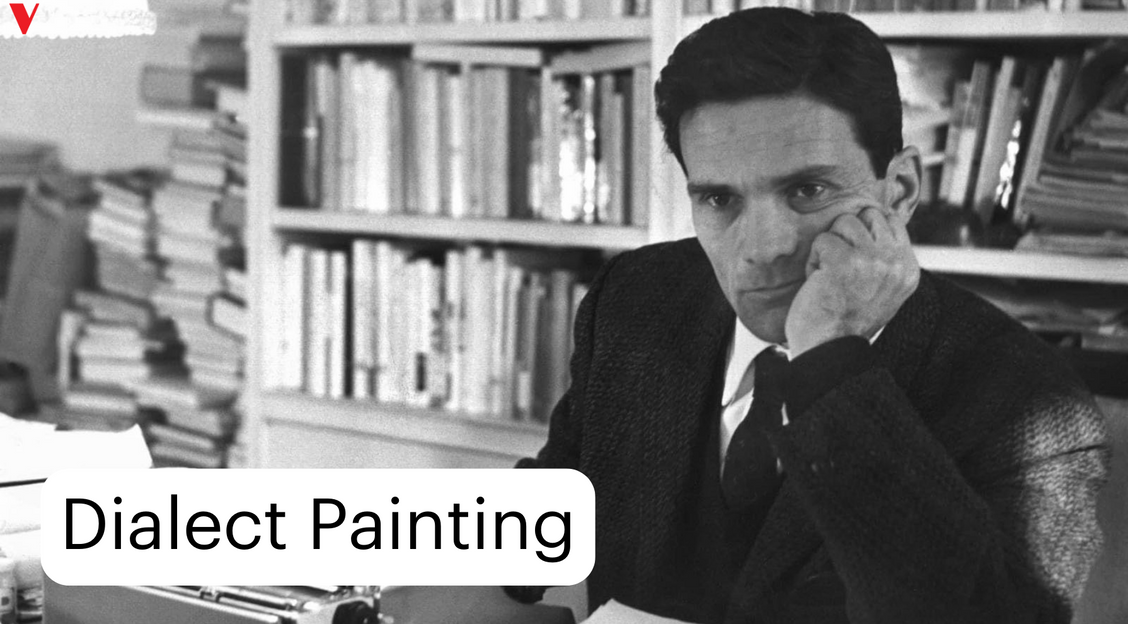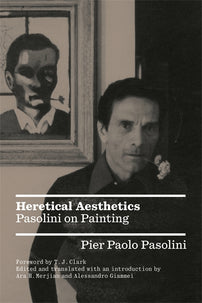Dialect Painting | Pier Paolo Pasolini
Pier Paolo Pasolini elaborates a theory of poetry and painting both inside and outside of the language of bourgeois ideology

In a general sense, poetry written in dialect is a phenomenon of the provinces. By ‘provinces’ I do not mean the strictly jurisdictional sense of the term, since one could apply it even to places such as Rome or Milan – cities which, in their non-traditional and non-dialectal environments, are, if anything, provinces of Europe as much as they are capitals in their own right. This means, in other words, that, in a general sense, poetry written in dialect is a phenomenon of the petite bourgeoisie.
In underdeveloped areas – the South or the mountains – the people continue writing their poetry, popular poetry, or, to use Mr Menéndez Pidal’s preferred term, traditional poetry. In industrial or urban areas, on the other hand, these subjects live entirely within the domain of bourgeois ideology. I am referring to that post-Risorgimento petite bourgeoisie that emerged with a glorious sense of future possibility at the turn of the century, but ended up nationalist or Catholic. Political stakeholders exercise the most diverse interpretations of this social class – from accusations of reactionary turpitude, to exaltations of its moral conformity and sense of frugality. Yet we find no better measure of its culture and moralism than its aesthetic products.
To understand, first of all, what poetry in ‘bourgeois’ dialect means in comparison with poetry in ‘popular’ dialect – and in turn what mentalities produced them – readers can turn to these works’ respective texts, though many remain unavailable. We find a good enough example of the distinction in the region of the Marche, a representative collection of poetry (Antonio Gianandrea’s Canti popolare marchigiani from 1875, to which one could add the Canti popolari di Valdolmo di Sassoferrato, 1940, edited by Giuseppe Vitaletti) and an equally serviceable collection of dialect poetry (Giovanni Crocioni, La poesia dialettale marchigiana, 1934). The latter reduces the popular world to a document of the editor’s obsession with folklore, as well as his own conservative moralism. Moreover, it stylistically represents the popular world through the facile and hypocritical technique of pure chromaticism.
Applying this summary geographical model to painting, we may conclude that the Italian Macchiaioli form the exact counterparts of dialect poets. With regard to the pictorial language of that period (nothing other than the language of Impressionism) the Macchiaioli painters are purveyors of a pictorial dialect. Yet they were notably Tuscan dialect painters, and thus (at least in the best and most rigorous cases) they were not entirely de-centred from the pictorial language that they mastered belatedly and peripherally – that is, provincially.
Indeed, if one were pressed to identify the pictorial equivalent of the Tuscan poetry of Renato Fucini and his imitators, no set of artists would rival the Macchiaioli. Neapolitan painting from the same period possesses its own regional roots; but even that painting emerged in relation to a centralized metropolitan ‘language’, which we could identify up to a certain moment as Verismo, and subsequently as part of D’Annunzio’s Decadentism, with its sensual links to folklore (think of Le novelle della Pescara or La figlia di Jorio, which reproduces, almost literally, the verses of a popular Passione from the Abruzzi region).
Comparing [the Neapolitan artist Vincenzo] Gemito with [the Neapolitan poet Ferdinando] Russo, one finds a stylistic convergence whereby Verismo merges with a descriptive photographic precision – a precision that, precisely in its excess fidelity to objects (simultaneously oozing with local colour) surpasses its own sensorial and empirical limits.
This convergence continues – as is only natural – into the twentieth century. We find a remarkable number of artists, many not bad at all, working at the margins of the centralized painting of Milan–Florence–Rome. They indeed occupy a ‘regional’ space, meaning that they diverge from ‘centralized’ painters not simply by virtue of content, but also, to use Benedetto Croce’s term, in their tone. Let us take as an example Pio Semeghini. Though extremely close to the ‘centre’ and undoubtedly ‘contemporary’, the Veneto region that Semeghini represents is a dialectal one: not solely for the objective content of its figures and landscapes, but also for the tone he uses to represent it (a tonalism drawn, we could say, from a crepuscular Post-Impressionism).
Semeghini, in short, could form the pictorial equivalent of the dialect poet Virgilio Giotti from Trieste. Like Semeghini, Giotti received a ‘centralized’ training in and around the Florentine journal Solaria. Yet he remains peripheral precisely for his use of dialect, to the point of elaborating contemporary poetic motifs in a tone no longer contemporary to its own moment. My readers can in turn apply this model to their own chosen subjects, from the Rome of [the painter Franco] Gentilini and [the poet Mario] Dell’Arco, to the Milan of the Expressionists and [the poet Delio] Tessa. They will in the process grasp a phenomenon (the aesthetic value of which may always be queried – and we, as students of Roberto Longhi, indeed seek to query it) constituting one of the most important moments, objectively and quantitatively, of our culture.
— Excerpted from Heretical Aesthetics: Pasolini on Painting by Pier Paolo Pasolini, preface by T. J. Clark, edited by Alessandro Giammei and Ara H Merjian
[book-strip]
